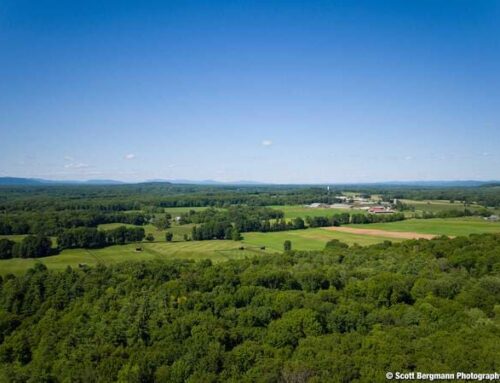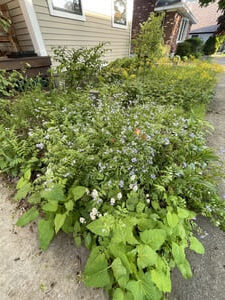
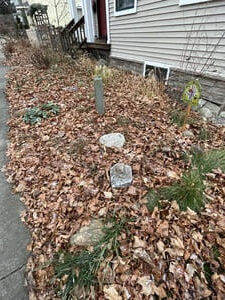
Leaves: Our Not So Hidden Superpower
by Johanna Garrison
When I was introduced to the realm of wildlife gardening ten years ago, I had no idea how much I needed to unlearn. For ages, I had followed the same gardening routines as my neighbors. Fall was the season to cut everything back and to amass heaps of leaves on the street. Once gone, I didn’t give the leaves another thought. Other than a few hibernating bumblebee queens, I figured most insects were dead by the time frost hit. I couldn’t have been more wrong.
Holy Habitat, Batman
In a recent study, University of Maryland Associate Professor of Entomology Karin Burghardt and graduate student Max Ferlauto wanted to know to what extent leaf removal impacted insect populations over winter. From 20 pesticide-free suburban yards, Burghardt, Ferlauto, and their team removed leaves from some areas and kept them in others. Then they set up emergence traps over each square meter patch that would keep everything contained, and in the spring they lifted each trap to quantify the life beneath.
Any guesses as to how many insects were collected under leaves from one square meter of suburban yard? An average of 18,000! Here’s the takeaway: When leaves were removed, so were 45% of butterflies and moths, up to 67% of spiders, and 25% of beetles, not to mention thousands of flies and other beneficial insects that vegetable gardeners love.
Here we are, thrilled to be planting, watering, propagating so much humming, buzzing vitality within our glorious wildlife gardens… only to smother these lives by cutting off their life cycle when we send leaves to the landfill.
To Shred or Not to Shred
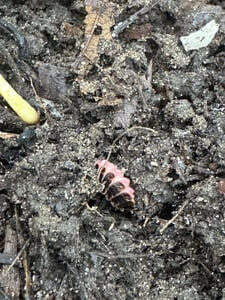
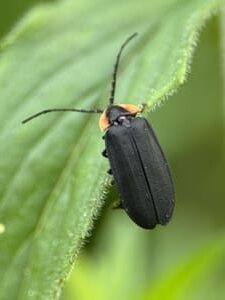 Years ago, I thought it was fine to wait till the leaves had fallen and then blast through them before putting the mower to bed for the winter. I’d read that leaves make excellent compost and felt gratified I wasn’t raking them to the curb. But according to Ferlauto, mulch-mowing or shredding is just as bad as removal. He calls it “direct mortality.” I sometimes wonder how many thousands of ecosystems I destroyed. Probably more like tens or hundreds of thousands. Sadly, we all know what that road to hell is paved with.
Years ago, I thought it was fine to wait till the leaves had fallen and then blast through them before putting the mower to bed for the winter. I’d read that leaves make excellent compost and felt gratified I wasn’t raking them to the curb. But according to Ferlauto, mulch-mowing or shredding is just as bad as removal. He calls it “direct mortality.” I sometimes wonder how many thousands of ecosystems I destroyed. Probably more like tens or hundreds of thousands. Sadly, we all know what that road to hell is paved with.
But I Don’t Live in a Forest– I Live in a Neighborhood
Maybe you don’t want a wilderness and you like your lawn. How about raking leaves into garden beds, less-traversed areas, and around trees to create what pollinator conservationist and author Heather Holm calls “soft landings.” Let them remain year-round as insects continue to emerge. I’ll bet these dark, damp, protected areas are the first to light up with fireflies next year. During an outdoor Sustainability Science class last fall, a high school senior uncovered a peculiar looking pink and brown critter and asked, “What’s this?” I shouted, “That’s a firefly larva! They live one to two years in the soil relying on moist leaf litter until they emerge as adults. The larvae eat slugs, snails, and earthworms. Awesome find!” Beaming, the student gently covered the larva back up with leaves.
“He Ain’t Heavy, He’s My Oak Leaf…”
Renowned entomologist and author Doug Tallamy says that the best leaf litter doesn’t degrade quickly. These leaves provide insulation, nutrients, and protection for longer periods than other leaves, and consequently preserve more insects and other arthropods. Enter the Mighty Oak. Larval host to over 500 different species of caterpillar, a native oak’s leaves provide moisture for thousands of critters, most of whom live beneath the soil, and numerous others who live within the leaves themselves. Furthermore, Tallamy reports that jumping worms don’t care for oak leaves; another win. Six inch layers, rather than large piles, is today’s standard recommendation. We can do that, can’t we?
Leaves Do a Lot More Than Look Pretty
Ecological gardening experts teach us that leaves are critical habitat. Here’s what they do:
- Return nutrients to the soil (free compost, anyone?)
- Provide insulation for overwintering invertebrates and mammals
- Retain moisture preventing dry soil, erosion, mycorrhizal disease and insect death
- Camouflage and protect wildlife
- Provide nesting material for insects, birds, and mammals
- Fortify the soil carbon which improves overall soil health, holds moisture, mitigates runoff, and suppresses weeds
The Xerces Society calls fall “the season of neglect.” Thanks to this study, we now have empirical evidence that leaves definitively play a critical role in preserving insects. So let’s leave the leaves, not to mention twigs, dead wood, and faded blooms. I assure you, the party does not stop during winter!
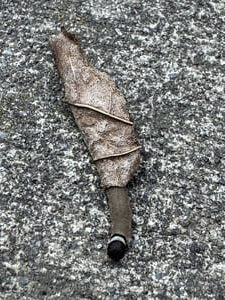
Resources:
Xerces Society’s Bug Banter Podcast Link: https://www.xerces.org/bug-banter/leave-leaves-or-lose-insects?emci=c874ce03-538e-f011-b484-6045bdeb7413&emdi=de1da724-b697-f011-b484-6045bdeb7413&ceid=14163139
Max Ferlauto’s and Karin Burghardt’s Science of the Total Environment study: https://www.sciencedirect.com/science/article/pii/S0048969725004565?emci=c874ce03-538e-f011-b484-6045bdeb7413&emdi=de1da724-b697-f011-b484-6045bdeb7413&ceid=14163139
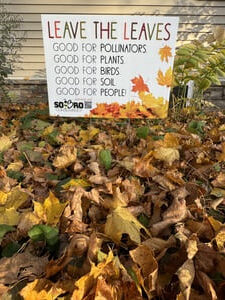
Nancy Lawson: https://www.humanegardener.com/newsletter-september-2025/
https://www.humanegardener.com/fallen-leaves-are-everything/
Heather Holm: https://www.pollinatorsnativeplants.com/
Joe Gardener Podcast: https://joegardener.com/podcast/nature-oaks-doug-tallamy/
Johanna Garrison is an active volunteer for Sustainable Saratoga’s Pollinator Committee and a garden advisory member for SoBro Conservancy. Recently retired from teaching, Johanna hopes to inspire others about the fascinating interconnection between insects and native plants.

